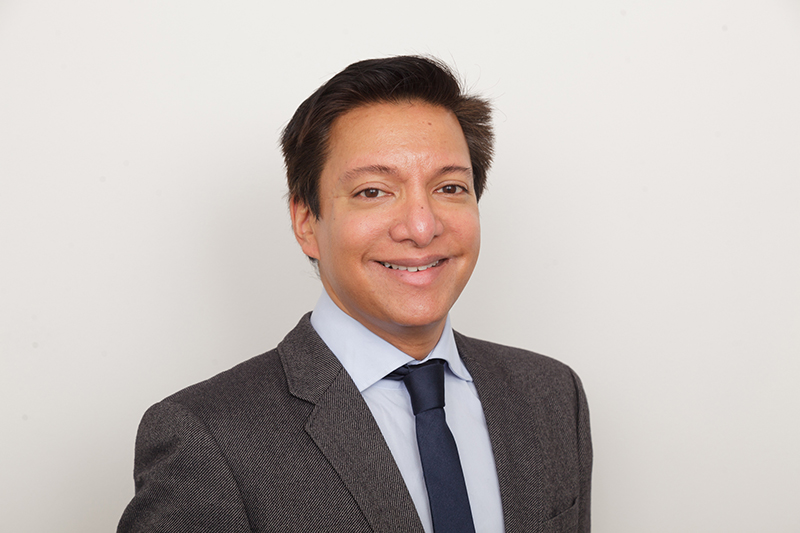An expert guide to tackling ACL injuries in sport
FEATURE - 18TH JULY 2022
Three leading consultants from the Grosvenor Orthopaedics team at King Edward VII’s Hospital – consultant musculoskeletal and sports injury radiologists Dr Rajat Chowdhury and Dr Ben Roberton and consultant knee surgeon Mr Luke Jones – explain when and how to seek help for an ACL injury, whatever your sporting prowess
We’re in the midst of an exciting summer of sport, from the recent Wimbledon finals to the ongoing Women’s Euros tournament, where the competition is hotting up more and more each day. The inspirational performances, paired with a spell of dry weather, are seeing many getting out and getting active, trying out new sports and putting their bodies to the test.
This is great for our physical fitness and overall wellbeing. But what about when the body lets you down and an injury occurs? We recently saw the Spanish women’s football team’s captain and biggest star, Alexia Putellas, in the Grosvenor Orthopaedics clinic at King Edward VII’s Hospital with a suspected torn anterior cruciate ligament (ACL). Whilst the confirmed diagnosis sadly saw Putellas ruled out of this year’s Euros, with early intervention and effective treatment of this common sporting injury, we have not seen the last of her on the pitch.
ACL sprains and tears don’t just affect the sporting elite though – and in this sporty summer, amateur sports fanatics should also keep an eye out for the injury and understand the steps for seeking the right help, which can make the difference between a speedy recovery and a life-long issue:

Dr Rajat Chowdhury of the Grosvenor Orthopaedics team at King Edward VII’s Hospital
How does someone tear their ACL?
The ACL is a major stabilising ligament of the knee. It is commonly injured when playing sport, particularly during manoeuvres that put strain on the knee, like football or netball, where athletes perform change-of-direction movements suddenly. Anyone enjoying sport, however, can reduce their chances of injury by strengthening the muscles around the knee, or warming up thoroughly.
How do I know if I’ve torn my ACL? What are the signs?
If you’ve torn your ACL, you’ll know about it. A medical professional will probably be able to tell from an external physical examination, as you’ll lose stability in the knee and be in considerable pain. Other signs may be swelling, bruising or inflammation. Many who have suffered a torn ACL report hearing a ‘popping’ sound at the time of injury. But an MRI scan is essential to determine the degree of damage and any other associated structural injuries, to guide the correct management and treatment plan. The quality of this scan will determine the extent of the damage, and here at King Edward VII’s Hospital, we use a state-of-the-art 3Tesla scanner with protocol sequences carefully tailored by our Grosvenor consultant radiologists, which allows us to examine the entire knee in the greatest of detail.
What should I do if I’ve torn my ACL?
Early, and effective, intervention is key to the long-term prognosis of an ACL injury. Our Grosvenor experts work closely together to pick up every detail and ensure the right course of action is taken. For Alexia Putellas, getting a bespoke MRI analysed by our consultant musculoskeletal and sports radiologists within hours of the injury enabled her to begin the right treatment straight away, and increased the speed and likelihood of returning to her pre-injury form. Even if you’re not a professional athlete, though, seeking help is essential, as it could prevent further complications such as development of arthritis.
Will I be able to play sport again? What are the recovery times?
Recovery times for an ACL injury are largely down to when you can start treatment, and the quality of care you receive. Depending on the extent of the injury, return to full sporting activity can be up to a year, but sticking to a comprehensive rehabilitation programme can speed this up. Treatment ranges from aggressive and specific physiotherapy to surgery, where the ACL is reconstructed using tendons from elsewhere in your leg. Generally, in high-level athletes having an operation will allow you to recover more quickly but some patients can return to normal function without an operation. We always tailor the treatment we offer to the specific details of the injury, and what we can see on the MRI scan, which can decrease recovery times and reduce chances of further complications such as increasing pain, instability, and damage to the cartilage leading to arthritis.
-
FEATURE
How does diabetes affect the heart?
Dr Malgorzata Wamil, consultant cardiologist at Mayo Clinic Healthcare, on the increased risks of heart disease that accompany diabetes, and how best to manage these risks
-
NEWS
King Edward VII’s Hospital adds genetics testing to its offering
New service at HSMA hospital supports patients by identifying the genetic risks of developing breast cancers and providing the necessary counselling
-
FEATURE
How DNA affects the fertility journey
To mark DNA Day (25th April), Dr Suvir Venkataraman, general manager of Harley Street Fertility Clinic, outlines the benefits of pre-implantation genetic testing
-
NEWS
Fortius Clinic announces renewal of Rugby Players Association partnership
HSMA orthopaedics and sports injury clinic supports professional rugby players through their careers and in the transition to retirement